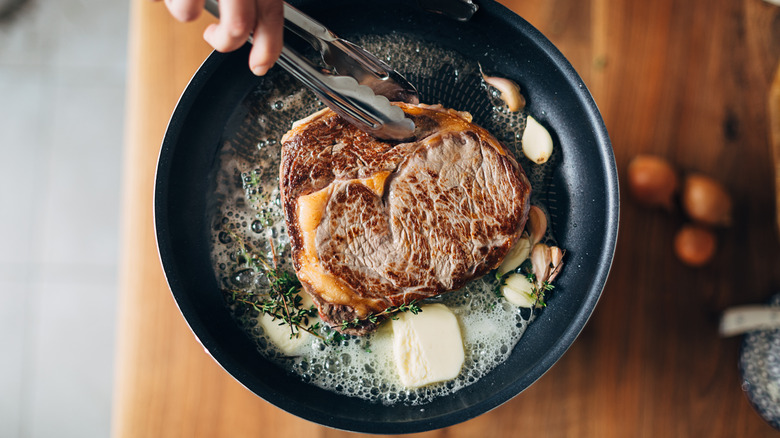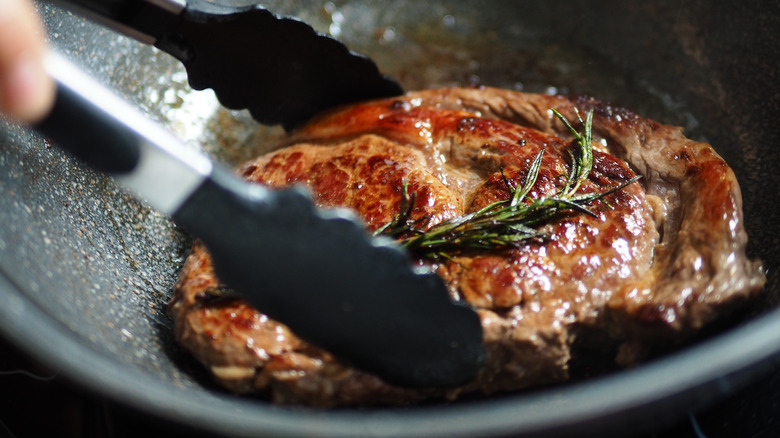How To Cook Ribeye Steak In A Pan For Sizzling Perfection
There are plenty of ways to prepare a perfect steak, and a pan may be the best method of all. There are a few reasons why cooking a ribeye steak on the stove is better than many steak fans may think. Not only does this method allow you to season your steak in different ways, but it keeps the meat extra tender. Plus, the entire cook time is less than an hour, so it's easy to time perfectly with your other sides for a simple yet delicious meal.
When it comes to preparing a ribeye steak in a pan, there are a few important things to keep in mind. First, you'll want to use a cast iron skillet. This is the best type of pan to ensure that your steak stays extra juicy. Next, you'll need oil, butter, and plenty of your favorite spices. Start by heating your oil, then add your steaks for a few minutes on each side. Then continue letting the steak sear until it has almost reached your desired doneness. Add butter and your favorite seasoning for a minute or two before taking your steaks off the heat to rest. Keep in mind that your steaks should be out of the fridge for around 20 minutes before you start cooking them, and they'll need about 10 minutes to rest afterward.
Time and temperature are vital details
There are plenty of reasons why ribeye steaks are the favorite of Michelin chefs; they're full of flavor and great for charring. Still, plenty of people don't think of cooking them in a pan as often as they do grilling them. When it comes to cooking your ribeye in a pan, accuracy with time and temperature are key. Everyone has a preference when it comes to how cooked they like their steak. Use a meat thermometer to get to your desired temperature, and remove your steaks when they're between five and ten degrees away from the ideal number. As an easy rule of thumb for cooking a ribeye in a pan, a medium rare should be 145 degrees Fahrenheit, a medium steak should be 160 degrees Fahrenheit, and a well done steak should be 170 degrees Fahrenheit. If your steak is particularly thick, try wrapping it loosely in aluminum foil while it rests after cooking.
No matter how you prefer your steak cooked, you should opt for undercooked instead of overcooked when you first take it out of the pan. If you need to cook the steak a bit extra, that's always an option, whereas once it's overcooked, you're stuck with it. Next time you get a steak at the grocery store, try cooking it on the stove — it just might open up a world of convenience and flavor.

